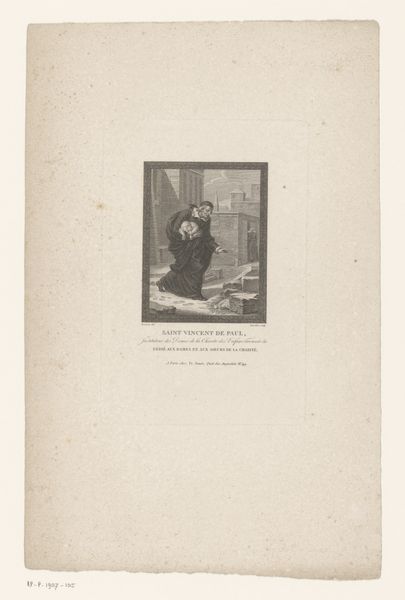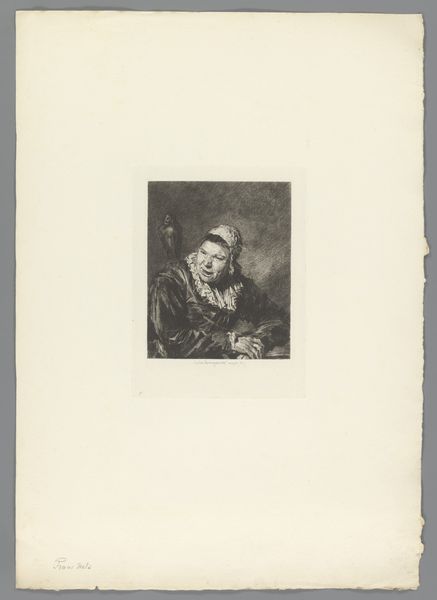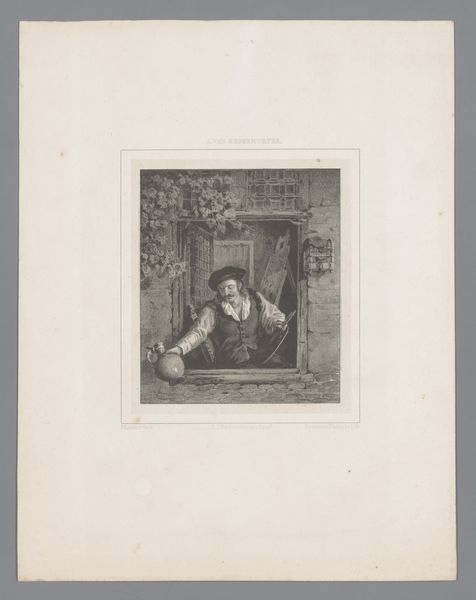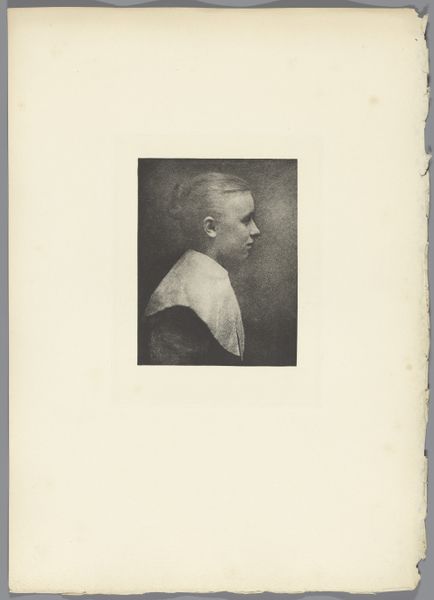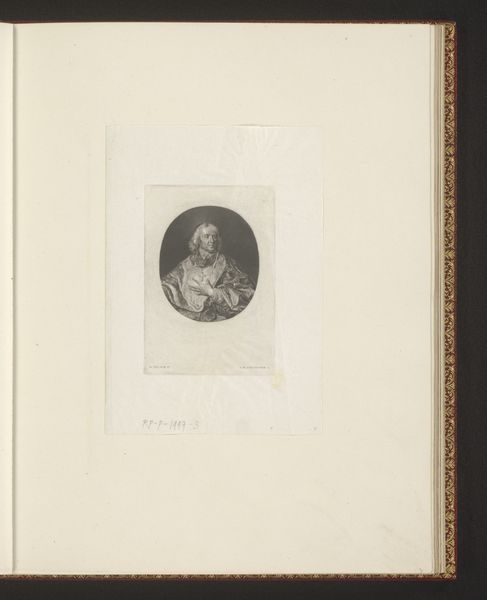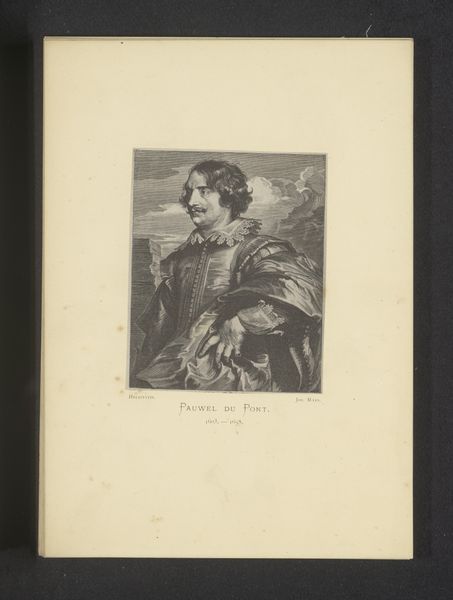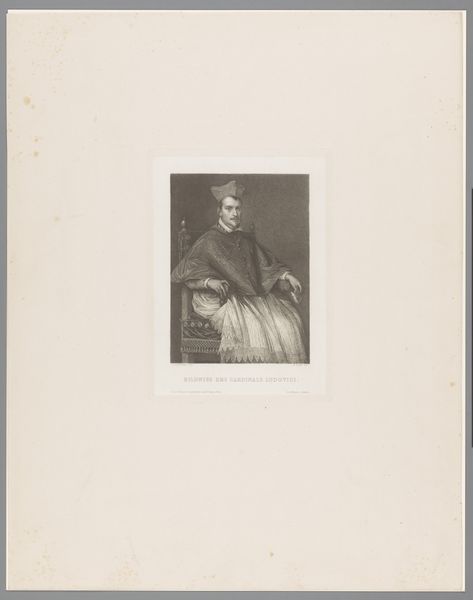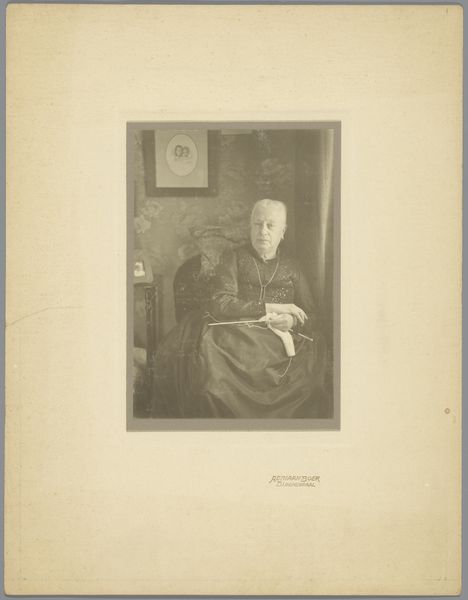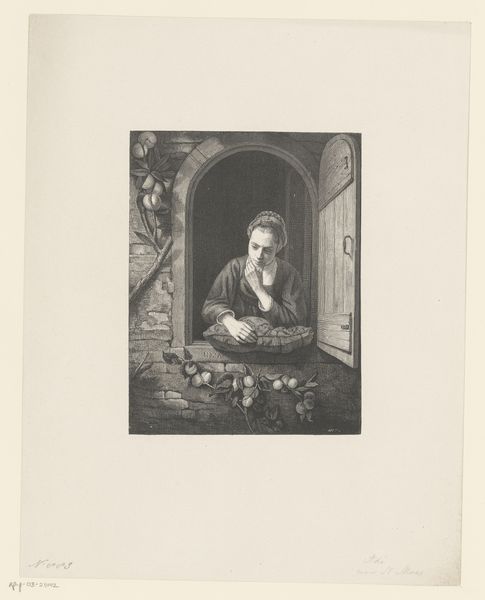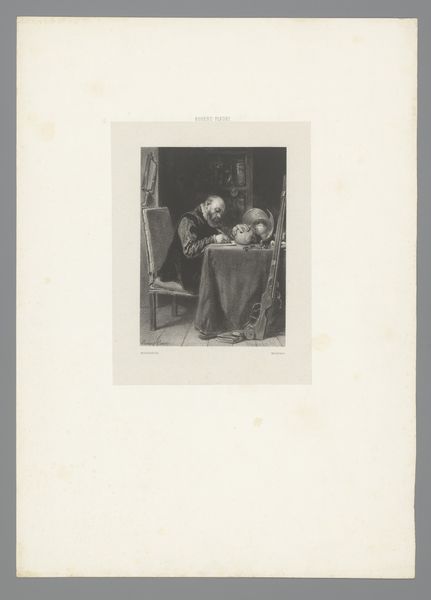
print, etching
#
beige
#
portrait
#
aged paper
#
pale palette
#
muted colour palette
#
photo restoration
# print
#
etching
#
light coloured
#
repetition of white
#
white palette
#
nude colour palette
#
remaining negative space
#
realism
Dimensions: height 200 mm, width 168 mm
Copyright: Rijks Museum: Open Domain
Editor: So, this is "Fotoreproductie van een ets, portret van een man," dating from around 1892 to 1900. It's an etching at the Rijksmuseum and has quite a muted palette, lending it an air of faded grandeur. How do you interpret this portrait? Curator: The subject's direct gaze and relaxed posture exude a certain confidence. Considering the hat, does it resemble a halo, or a shadow? There’s something deeply compelling in the mirroring between light and shadow in this portrait. Does the balance convey a sense of equilibrium, or perhaps internal conflict? Editor: It could be either! What’s fascinating to me is how the light and shadow seem to soften the man’s features, obscuring the specifics, and making him into almost an archetype rather than an individual. Curator: Precisely! Consider also how archetypes evolve and shift across different cultures. Does his demeanor evoke similar feelings or expectations cross-culturally? Think about historical portraits. The weight of symbolism conveyed in posture, attire, even the fall of light… what continuities and discontinuities do you observe? Editor: That’s a great question. I guess it shows how we project our own cultural understandings onto images from the past, looking for echoes of ourselves. Curator: Indeed! And, by examining the choices the artist made, and how those choices resonate through time, we uncover layers of meaning, revealing cultural memory itself. Editor: I hadn't considered how much portraits could be a repository of cultural memory before! Thanks. Curator: It's through understanding symbols that we see the enduring echoes of humanity within a single image.
Comments
No comments
Be the first to comment and join the conversation on the ultimate creative platform.

